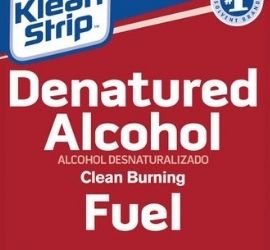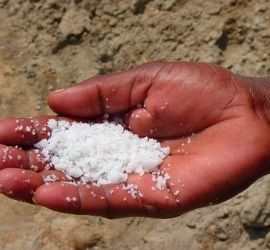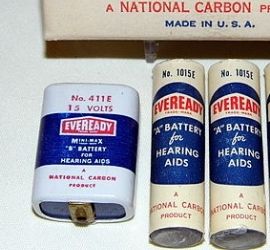What is Denatured Alcohol?

Denatured alcohol is ethanol or ethyl alcohol made unfit for human consumption. This is done by adding one or more chemical denaturants to it. Denaturing refers to removing the property from the alcohol of being able to drink it. Otherwise, it is not chemically altered or decomposed. In the end, denatured alcohol contains ordinary ethyl alcohol.
Alcohol is used as a cleaning agent, a solvent, and as fuel for alcohol burners and camping stoves. Because of the diversity of industrial uses for denatured alcohol, hundreds of additives and denaturing methods have been used. The main additive usually is 10% methanol (methyl alcohol). As a result, it is often referred to by the name methylated spirits. Other common additives include isopropyl alcohol, acetone, methyl ethyl ketone, and methyl isobutyl ketone. Denaturing alcohol does not chemically alter the ethanol molecule. Rather, the ethanol is mixed with other chemicals to form a foul-tasting, often toxic, solution. For many of these solutions, it is intentionally difficult to separate the components.
Why Is Alcohol Denatured?
Why take a pure product and make it toxic? Basically, it’s because alcohol is regulated and taxed by many governments. Pure alcohol, if it was used in household products, would offer a cheap and readily available source of ethanol for drinking. If alcohol wasn’t denatured, people would drink it recreationally.
- Specially Denatured Alcohol – Specially Denatured Alcohol (SDA) is alcohol to which denaturing materials have been added. Manufacturers may use SDA in the manufacture of any product that is not intended for consumption. Generally, SDA is used in cosmetic products but its use extends to pharmaceuticals, chemical manufacturing, and products where SDA is the solvent or reactant.
- Completely Denatured Alcohol – Completely Denatured Alcohol (CDA) has been so thoroughly denatured that the product is utterly unfit for beverage use. Also, the denaturants used are very nearly inseparable from the alcohol. The use of CDA is authorized without permit restrictions. This is because of the reduced risk that pure alcohol can be extracted and diverted to beverage use. (Source: ttp.gov)
In some countries, it must be colored blue or purple using an aniline dye, in order to distinguish it from consumption-grade ethanol. In the United States, for example, denatured alcohol need not be colored. As a result, you can’t tell whether alcohol is pure or not simply by looking at it.
What Happens If You Drink Denatured Alcohol?
Don’t even think about it! In addition to the effects of the alcohol, you’d experience effects from the other chemicals in the mixture. The exact nature of the effects depends on the denaturing agent. If methanol is the agent, possible effects include nervous system and other organ damage, increased risk of cancer, and possibly death.
There are hundreds of ways ethanol is denatured. Denatured alcohol that is intended for use as a fuel or solvent typically contains 5% or more methanol. Methanol is flammable and has a boiling point close to that of ethanol. Methanol is absorbed through the skin and is highly toxic. You really shouldn’t use denatured alcohol for making DIY perfume or bath products. However, there are types of denatured alcohol that are suitable for healthcare products. Specially denatured alcohol (SDA) contains ethanol and other chemicals that are not harmful for use in cosmetics or pharmaceuticals. Always check the label. SDAs often list the denaturant as a guide for proper use.
Is Rubbing Alcohol Different?
Rubbing alcohol is a generic term and is usually manufactured with isopropyl alcohol. Different brands of denatured alcohol contain various denaturants such as bittering agents. The purpose is to discourage recreational human consumption by including additives that are bad tasting, bad-smelling or nauseating.
Rubbing alcohol is considered to be a surgical spirit rather than a methylated spirit. Rubbing alcohol is used in medical environments as a topical application. It is a type of denatured alcohol prepared from a special solution. It usually consists of roughly 70 percent pure ethanol or isopropyl alcohol in its concentrated form. The generic term rubbing alcohol is used to describe either isopropyl or ethyl-based products. Both have similar qualities and uses, but are different chemical solutions. The two forms are designed to serve different purposes. Antiseptic versions can be used as a gentle solvent substitute for home or business applications.
Examples of Products Containing Denatured Alcohol
You’ll find denatured alcohol in reagent alcohol for use in labs, hand sanitizer, rubbing alcohol, and fuel for alcohol lamps. It’s also found in cosmetics and other personal care products.
What Are the Benefits?
Denatured alcohol offers the following advantages as a household cleaner:
- Antibacterial properties: Very few microbes can survive contact with a blend of ethanol and methanol.
- Works fast: You can achieve the desired results in a shorter amount of time than you can with an average commercial detergent or degreaser.
- Evaporates quickly: This makes it perfect for cleaning porous surfaces, like wood and moisture-sensitive metals. It’s also the best cleaner for windows and glass, as it doesn’t streak.
The best part is denatured alcohol is dirt cheap compared to commercial cleaners. A gallon of denatured alcohol costs about $10 to $15 at your local hardware store. (Source: lifesavvy.com)
Applications of Denatured Products
Alternative denatured forms are used as a quick evaporating solvent by hobbyists, cleaning crews, painters, and manufacturing environments. Denatured alcohol is applied as a dependable cleaner to accomplish spot or grime removal. The quick-drying properties are an exceptional function when the substance must not remain on the surface for an extended period of time. Camping stoves include denatured alcohol in fuels because it is an ideal clean burning solution that can be easily put out with water.
- Rubbing alcohol works as a minor cleaning solvent and is meant to be applied as an antiseptic.
- Denatured alcohol is used as a solvent, a fuel additive, and for sanding or finishing purposes and should never be applied as an antiseptic or consumed.
Both forms are highly flammable making it important to take extra precautions when handling in an enclosed environment or using in large quantities. (Source: ecolink.com)
Denatured Alcohol for Cosmetics and Labs
Alcohol for use in cosmetics often contains water and a bittering agent like denatonium benzoate or denatonium saccharide. Other chemicals are sometimes used including isopropanol, methyl ethyl ketone, methyl isobutyl ketone, pyridine, benzene, diethyl phthalate, and naphtha.
Is denatured alcohol bad for your skin and hair?
Denatured alcohol is sometimes used in cosmetics and skincare products (such as toners) as a drying agent. It dries quickly, neutralizes oil, and gives your skin a smooth, matte feel. In small amounts, there is usually no problem in cosmetics unless it’s mixed with methanol, which can seep in through the skin. However, while it isn’t typically toxic at the levels needed for cosmetics, it can cause excessive dryness and disturb the natural barrier on your skin. Some studies suggest that alcohol on the skin may also cause breakouts, skin irritation, and redness.
A note of caution. It can show up in products claiming to be “alcohol-free” through a sneaky marketing loophole. In FDA-approved parlance, “alcohol” only refers to ethanol. So once the alcohol in a product has been “denatured,” it’s no longer ethanol — and therefore, according to the strictest interpretation of FDA standards, is not alcohol. (Source: healthline.com)
General Warnings
Even though methylated spirits might sound safe for home use, always keep in mind that it’s a toxic chemical. Do not let it come in contact with any part of your body, and definitely do not eat or drink it. Ingestion or absorption through the skin can cause blindness or even death. For these reasons, keep it away from children and store it in a dark, cool place. Like rubbing alcohol, this solution is also highly flammable. Never leave it in direct sunlight or near an open flame. It’s also always best to work with this chemical in a well-ventilated room to avoid respiratory irritation.
Treat it as you would any other strong cleaner, like ammonia or bleach. Definitely open a window and wear gloves while using it, and be sure to store it properly. If you take these precautions and treat it with the same respect you would any other strong cleaner, it’s a great fast-acting, cleaner! Plus, its antibacterial properties can be used on a wide variety of hard surfaces.
Up Next: What is Saltpeter?
 Saltpeter (potassium nitrate) is a naturally occurring chemical compound. It is white in color and soluble in water with a cool, salty taste.
Saltpeter (potassium nitrate) is a naturally occurring chemical compound. It is white in color and soluble in water with a cool, salty taste.
Saltpeter is the common name for both potassium nitrate and sodium nitrate. It is a commercially useful ingredient in fertilizers, propellants, explosives, food preservatives, and toothpaste for sensitive teeth. A concentrated solution of potassium nitrate is useful in landscaping and farming. It helps to speed up the decomposition of vegetable matter and remove tree stumps. For mechanical applications, it has oxidizing properties that make it useful as a rust inhibitor for metals. Potassium nitrate also has medical use in the treatment of high blood pressure and heart ailments.
Although saltpeter (potassium nitrate) is used in fertilizer and fireworks, it is also used to preserve meats. Additionally, it has a reputation for lowering libido, but this is only a myth.


